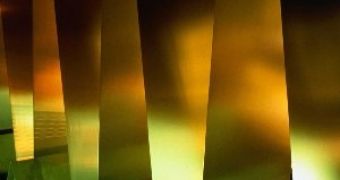The latest association between the scientists from a UK university and the steel industry yielded a photovoltaic paint which, when applied on steel, produces energy.
The photovoltaic paint is formed of a paste mix of electrolytes and dye which can be spread on sheets of steel, four layers of paint per sheet. When exposed to light, the solar cells' affected molecules release electrons into a collector and a circuit (nanocrystalline titanium dioxide). Eventually, the electrons travel reversely back into the paint.
This kind of paint shows a wide range of advantages when compared to the regular solar cells, especially since it doesn't stumble on material limitations like the silicon-based cells, which means it is able, at least in theory, to generate a large number of terawatts of electricity at a relatively cheap expense. Furthermore, it is capable of absorbing all light across the visible spectrum, which makes it still able to render high levels of electrical energy even in cloudy atmospheric conditions. As the steel company Corus Colours estimates, these solar cells are able to yield a power conversion efficiency of 11%.
The laboratory which was built in North Wales in order to produce this new technology of solar paint will be fully functional on October 30th this year. The estimated goal of the scientists from the PV Accelerator Laboratory, as the North Wales facility is called, is to come up with a method that would enable them to coat steel sheets with solar paint at a rate of 30-40 square meters (323 to 430 square feet) per second. If the technology reaches the regular market soon, this could lead to a major breakthrough in the field of solar energy development, as individuals will be able to do it themselves and, who knows, maybe even come up with more innovative features or techniques.

 14 DAY TRIAL //
14 DAY TRIAL //